2019 辽宁考研英语二真题及答案
Section I Use of English
Read the following text. Choose the best word(s) for each numbered blank and
mark A, B,C or D on the ANSWER SHET(10 points)
Weighing yourself regularly is a wonderful way to stay aware of any significant
weight fluctuations 1 , when done too often, this habit can sometimes hurt more
that it 2 .
As for me, weighing myself every day caused ma to shift my focus from being
generally healthy and physically active to focusing 3 on the scale. That was bad
to
my overall fitness goals. I had gained weight in the form of muscle mass, but thinking
only of 4 the number on the scale, I altered my training program. That
conflicted with how I needed to train to 5 my goals.
I also found that weighing myself daily did not provide an accurate 6 of the
hard work and progress I was making in the gym. It takes about three weeks to a
month to notice any significant changes in your weight 7 altering your training
program. The most 8 changes will be observed in skill level, strength and inches
lost.
For these 9 I stopped weighing myself every day and switched to a bimonthly
weighing schedule 10 .Since weight loss is not my goal, it is less important for
me
to ll my weight each week. Weighing every other week allows me to observe and
12 any significant weight changes. That tells me whether I need to 13 my training
program.
I use my bimonthly weight-in 14 to get information about my nutrition as
well. If my training intensity remains the same, but I'm constantly 15 and dropping
weight, this is a 16 that I need to increase my daily caloric intake.
The 17 to stop weighing myself every day has done wonders for my overall
health, fitness and well-being. I’m experiencing increased zeal for working out
since I
no longer carry the burden of a 18 morning weigh-in. I've also experienced greater
success in achieving my specific fitness goals. 19 I’m training according to those
goals, not the numbers on a scale.
Rather than 20 over the scale, turn your focus to how you kook, feel, how
you clothes fit and your overall energy level.
1. A. Therefore
B. Otherwise C. However D. Besides
2. A. cares B. warns C. reduces D. helps
3. A solely B. occasionally C. formally D. initially4. A lowering B. explaining
C.accepting D. recording
5. A. set B. review C.reach D.modify
�
6. A. depiction B. distribution C. prediction D.definition
7. A. regardless of B. aside from C. along with D. due to
8. A. rigid B. precise C. immediate D. orderly
9. A.judgments B. reasons C. methods D. claims
10. A. though B. again C.indeed D. instead
11. A. track B. overlook C.conceal D. report
12. A. approve of B. hold onto C.account for D. depend on
13. A. share B. adjust C. confirm D prepare
14. A. features B. rules C.tests D results
15. A anxious B. hungry C.sick D. bored
16. A. secret B belief C. sign D. principle
17. A. necessity B. decision C.wish D. request
18. A. surprising B. restricting C. consuming D. disappointing
19. A. because B. unless C.until D. if
20. A. dominating
B. puzzling C.triumphing D. obsessing
Section II Reading Comprehension
Part A Directions
Read the following four texts. Answer the questions after each text by
choosing A, B,C or D. Mark your answer on the ANSWER SHEET (40 points)
Text 1
Unlike so-called basic emotions such as sadness, fear, and anger, guilt emerges a
little later, in conjunction with a child's growing grasp of social and moral norms.
Children aren't born knowing how to say "I'm sorry”; rather, they learn over time
thatsuch statements appease parents and friends - and their own consciences. This
is why
researchers generally regard so-called moral guilt, in the right amount, to be a
good
thing.
In the popular imagination, of course, guilt still gets a bad rap. It is deeply
uncomfortable - it's the emotional equivalent of wearing a jacket weighted with
stones.
Yet this understanding is outdated. "There has been a kind of revival or a rethinking
about what guilt is and what role guilt can serve," says Amrisha Vaish, a psychology
researcher at the University of Virginia, adding that this revival is part of a larger
recognition that emotions aren't binary -feelings that may be advantageous in one
context may be harmful in another. Jealousy and anger, for example, may have
evolved to alert us to important inequalities. Too much happiness can be destructive.
And guilt, by prompting us to think more deeply about our goodness, can
encourage humans to make up for errors and fix relationships. Guilt, in other words,
can help hold a cooperative species together. It is a kind of social glue.
Viewed in this light, guilt is an opportunity. Work by Tina Malti, a psychology
professor at the University of Toronto, suggests that guilt may compensate for an
emotional deficiency. In a number of studies, Malti and others have shown that guilt
�
and sympathy may represent different pathways to cooperation and sharing Some kids
who are low in sympathy may make up for that shortfall by experiencing more guilt,
which can rein in their nastier impulses. And vice versa: High sympathy can
substitute
for low guilt.
In a 2014 study, for example, Malti looked at 244 children Using caregiver
assessments and the children's self-observations, she rated each child's overall
sympathy level and his or her tendency to feel negative emotions after moral
transgressions. Then the kids were handed chocolate coins, and given a chance to
shared them with an anonymous child. For the low-sympathy kids, how much they
shared appeared to turn on how inclined they were to feel guilty. The guilt-prone
ones
shared more, even though they hadn't magically become more sympathetic to the
other child's deprivation
" That's good news, " Malti says. " We can be prosocial because we caused harm
and we feel regret.”
21.Researchers think that guilt can be a good thing because it may help____
A) foster a child's moral development
B) regulate a child's basic emotions
C) improve a child’s intellectual ability
D) intensity a child's positive feelings22.According to paragraph 2, many people
still consider guilt to be____
A) inexcusable
B) deception
C) addictive
D) burdensome
23. Vaish hold that the rethinking about guilt comes from an awareness that
A)emotions air context-independent
B)an emotion can play opposing roles
C)emotion are socially constructive
D) emotional stability can benefit health
24. Malti and others have shown that cooperation and sharing
·
A. may help correct emotional deficiencies
B. can result from either sympathy or guilt
C. can bring about emotional satisfaction
D. may be the outcome of impulsive aets
25. The word "transgressions" (Line 4, Para. 5) is closest in meaning to___
A. Teachings
B, discussions
C. Restrictions
D. D. wrongdoings
Text 2
Forests give us shade, quiet and one of the harder challenges in the fight against
�
climate change. Even as we humans count on forests to soak up a good share of thecarbon
dioxide we produce, we are threatening their ability to do so.The climate
change we are hastening could one day leave us with forests that emit more carbon
than they absorb.
Thankfully, there is a way out of this trap . but it involves striking a subtle
balance. Helping forests flourish as valuable"carbon sinks" long into the future
may
require reducing their capacity to absorb carbon now, California is leading the
way,as
it does on so many climate efforts, in figuring out the details.
The state's proposed Forest Carbon Plan aims to double efforts to thin out young
trees and clear brush in parts of the forest. This temporarily lowers carbon-carrying
capacity. But the remaining trees draw a greater share of the available moisture,
so
they grow and thrive, restoring the forest's capacity to pull carbon from the air.
Healthy trees are also better able to fend off insects. The landscape is rendered
less
easily burnable. Even in the event of a fire, fewer trees are consumed.
The need for such planning is increasingly urgent. Already, since 2010,drought
and insects have killed over 100million trees in California, most of them in 2016
alone, and wildfires have burned hundreds of thousands of acres.
California plans to treat 35,000 acres of forest a year by 2020, and 60,00 by
2030- financed from the proceeds of the state' s emissions- permit auctions, That's
only a small share of the total acreage that could benefit, about half a million
acres in
all, so it will be vital to prioritize areas at greatest risk of fire or drought.
The strategy also aims to ensure that carbon in woody material removed from the
forests is locked away in the form of solid lumber or burned as biofuel in vehicles
that
would otherwise run on fossil fuels. New research on transportation biofuels is
already under way.
State governments are well accustomed to managing forests, but traditionally
they've focused on wildlife, watersheds and opportunities for recreation. Only
recently have they come to see the vital part forests will have to play in storing
carbon.
Califormia's plan, which is expected to be finalized by the governor next year,
should
serve as a model.
26. By saying "one of the harder challenges ,"the author implies that_
A. global climate change may get out of control
B. people may misunderstand global warming
C. extreme weather conditions may arise
D. forests may become a potential threat
�
27. To maintain forests as valuable "carbon sinks," we may need to_A. preserve the
diversity of species in them
B. accelerate the growth of young trees
C. strike a balance among different plants
D. lower their present carbon- absorbing capacity
28. California's Forest Carbon Plan endeavors to
A. cultivate more drought-resistant trees
B. reduce the density of some of its forests
C. find more effective ways to kill insects
D. restore its forests quickly after wildfires
29. What is essential to California's plan according to Paragraph 5?
A. To handle the areas in serious danger first
B. To carry it out before the year of 2020
C. To perfect the emissions-permit auctions.
D. To obtain enough financial support
30. The author's attitude to California's plan can best be described as___.
A. Ambiguous
B. Tolerant
C. Supportive
D. cautious
Text 3
American farmers have been complaining of labor shortages for several
years.The complaints are unlikely to stop without an overhaul of immigration rules
for farm works.
Congress has obstructed efforts to create a more straightforward visa for
agricultural workers that would let foreign workers stay longer in the U.S. and
change
jobs within the industry.If this doesn’t change.American businesses.communities,
and
consumers will be the losers.Perhaps half of U.S. farm laborers are undocumented
immigrants. As fewer such
workers enter the country, the characteristics of the agricultural workforce are
changing. Today's farm laborers, while still predominantly born in Mexico, are more
likely to be settled rather than migrating and more likely to be married than single,
They're also aging. At the start of this century, about one-third of crop workers
were
over the age of 35. Now more than half are. And picking crops is hard on older bodies.
One oft-debated cure for this labor shortage remains as implausible as it's been
all
along: Native U.S. workers won't be returning to the farm.
Mechanization is not the answer either—not yet, at least. Production of
com,cotton, rice, soybeans, and wheat has been largely mechanized, but many
high-value, labor-intensive crops, such as strawberries, need labor. Even dairy
�
farms,where robots do a small share of milking, have a long way to go before they
' re
automated.
As a result, farms have grown increasingly reliant on temporary guest workers
using the H-2A visa to fill the gaps in the workforce. Starting around 2012, requests
for the visas rose sharply; from 2011 to 2016 the number of visas issued more than
doubled.
The H-2A visa has no numerical cap, unlike the H-2B visa for nonagricultural
work which is limited to 66,000 a year. Even so, employers complain they aren’t
given all the workers they need.The process is cumbersome,expensive,and unreliable.
One survey found that bureaucratic delays led the average H-2A worker to arrive on
the job 22 days late. The shortage is compounded by federal immigration raids, which
remove some workers and drive others underground.
In a 2012 survey, 71 percent of tree-fruit growers and nearly 80 percent of raisin
and berry growers said they were short of labor. Some western growers have
responded by moving operations to Mexico. From 1998-2000, 14.5 percent of the
fruit Americans consumed was imported. Little more than a decade later, the share
of
imported fruit had increased to 25.8 percent.
In effect, the U.S. can import food or it can import the workers who pick it.
31. What problem should be addressed according to the first two paragraphs?
A. Discrimination against foreign workers in the U.S.
B. Biased laws in favor of some American businesses.
C. Flaws in U.S. immigration rules for farm workers.
D. Decline of job opportunities in U.S. agriculture.
32. One trouble with U.S. agricultural workforce is_
A. the rising number of illegal immigrants
B. the high mobility of crop workers
C. the lack of experienced laborers
D. the aging of immigrant farm workers
33, What is the much-argued solution to the labor shortage in U.S farming?
A. To attract younger laborers to farm work.B. To get native U.S. workers back to
farming.
C. To use more robots to grow high-value crops.
D. To strengthen financial support for farmers.
34, Agricultural employers complain about the H-2A visa for its
A. slow granting procedures
B. limit on duration of stay
C. tightened requirements
D. control of annual admissions
35. Which of the following could be the best title for this text?
A. U.S. Agriculture in Decline?
B. Import Food or Labor?
C. America Saved by Mexico?
�
D. Manpower vs. Automation?
Text 4
Amold Schwarzenegger, Dia Mirza and Adrian Grenier have a message for you:
It's easy to beat plastic. They're part of a bunch of celebrities starring in a new
video
for World Environment Day encouraging you, the consumer, to swap out your
single-use plastic staples like straws and cutlery to combat the plastics crisis.
The key messages that have been put together for World Environment Day do
include a call for governments to enact legislation to curb single-use plastics.
But the
overarching message is directed at individuals.
My concern with leaving it up to the individual, however, is our limited sense of
what needs to be achieved. On their own, taking our own bags to the grocery store
or
quitting plastic straws, for example, will accomplish little and require very little
of us.
They could even be detrimental, satisfying a need to have "done our bit" without
ever
progressing onto bigger, bolder, more effective actions a kind of "moral licensing"
that allays our concerns and stops us doing more and asking more of those in charge.
While the conversation around our environment and our responsibility toward it
remains centered on shopping bags and straws, we're ignoring the balance of power
that implies that as "consumers" we must shop sustainably, rather than as"citizens"
hold our governments and industries to account to push for real systemic change.
It's important to acknowledge that the environment isn't everyone's priority - or
even most people's. We shouldn't expect it to be. In her latest book, Why Good People
Do Bad Environmental Things, Wellesley College professor Elizabeth R. DeSombre
argues that the best way to collectively change the behavior of large numbers of
people is for the change to be structural.
This might mean implementing policy such as a plastic tax that adds a cost to
environmentally problematic action,or banning single-use plastics altogether.
India
has just announced it will "eliminate all single-use plastic in the country by 2022."
There are also incentive-based ways of making better environmental choices easier,
such as ensuring recycling is at least as easy as trash disposal.DeSombre isn't
saying people should stop caring about the environment. It's just
that individual actions are too slow,she says, for that to be the only, or even
primary,
approach to changing widespread behavior.
None of this is about writing off the individual, It's just about putting things
into
perspective. We don't have time to wait. We need progressive policies that shape
collective action (and rein in polluting businesses), alongside engaged citizens
pushing for change.
�
36. Some celebrities star in a new video to
A. demand new laws on the use of plastics
B. urge consumers to cut the use of plastics
C. invite public opinion on the plastics crisis
D. disclose the causes of the plastics crisis
37. The author is concerned that moral licensing" may
A. mislead us into doing worthless things
B. prevent us from making further efforts
C. weaken our sense of accomplishment
D. suppress our desire for success
38. By pointing out our identity as “citizens,",the author indicates that
A; our focus should be shifted to community welfare
B: our relationship with local industries is improving
C: We have been actively exercising our civil rights
D: We should press our government to lead the combat
39. DeSombre argues that the best way for a collective change should be
A: a win-win arrangement
B: a self-driven mechanism
C: a cost-effective approach
D: a top down process
40. The author concludes that individual efforts
A: can be too aggressive
B: can be too inconsistentC: are far from sufficient
D: are far from rational
Part B
Directions:
You are going to read a list of headings and a text. Choose the most suitable heading
from the list A-G for each numbered paragraph (41-45). Mark your answers on the
ANSWER SHEET.(10 points)
Five ways to make conversation with anyone
In choosing a new home, Camille MeClain's kids have a single demand: a
backyard.
MeClain's little ones aren't the only kids who have an opinion when it comes to
housing, and in many cases youngsters' views weigh heavily on parents' real estate
decisions, according to a 2018 Harris Poll survey of more than 2,000 U.S. adults.
While more families buck an older-generation proclivity to leave kids in the dark
about real estate decisions, realty agents and psychologists have mixed views about
the financial, personal and long-term effects kids' opinions may have.
The idea of involving children in a big decision is a great idea because it can help
them feel a sense of control and ownership in what can be an overwhelming process,
said Ryan Hooper, a clinical psychologist in Chicago.
"Children may face serious difficulties in coping with significant moves,
especially if it removes them from their current school or support system," he said.
Greg Jaroszewski, a real estate brokers with Gagliardo Realty Associates, said
�
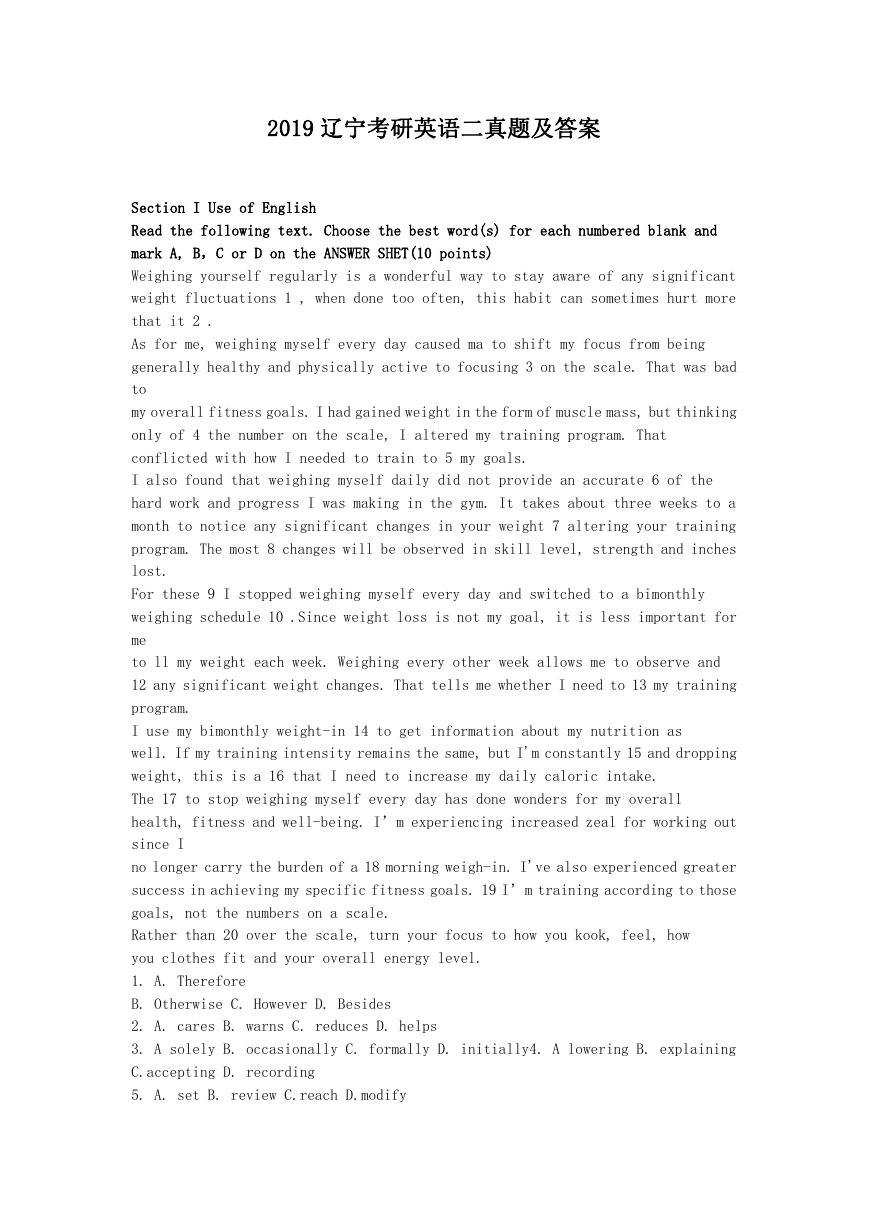
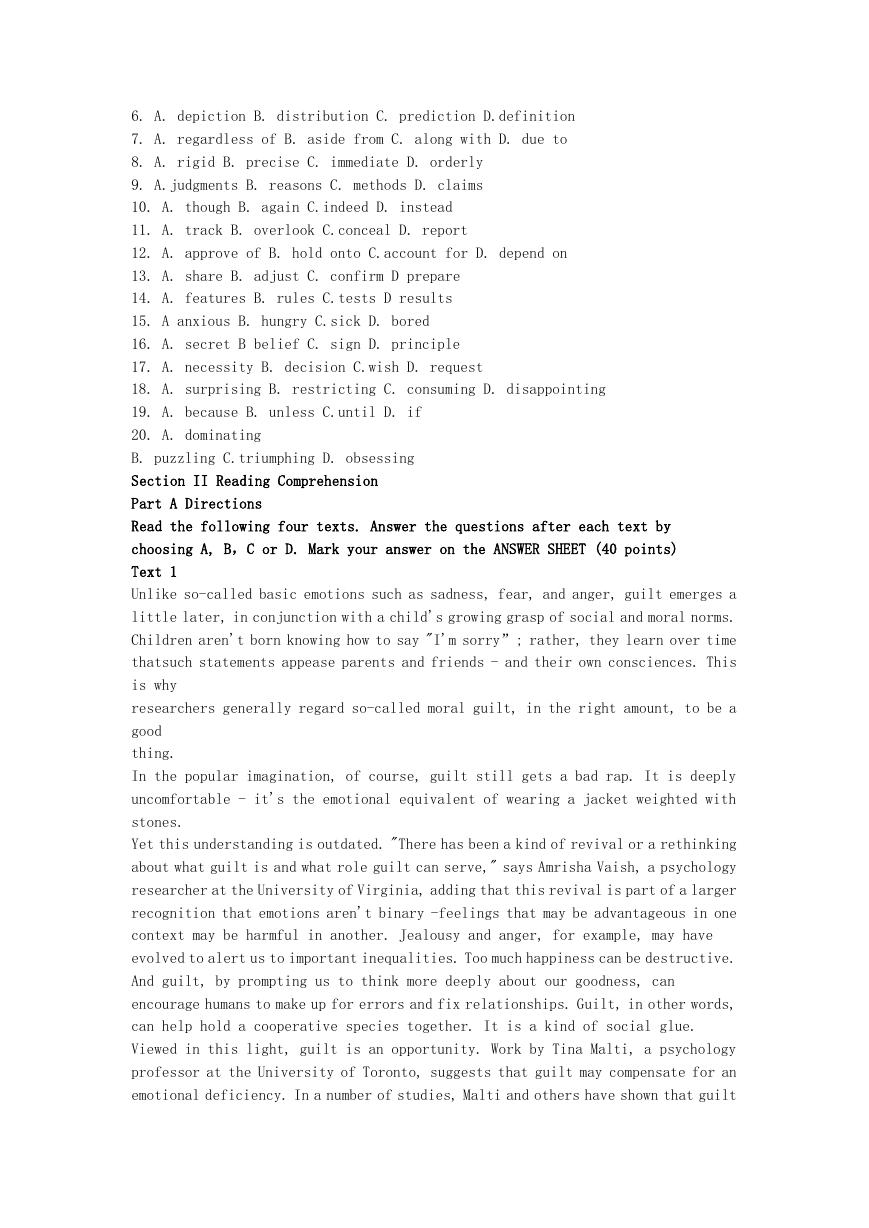
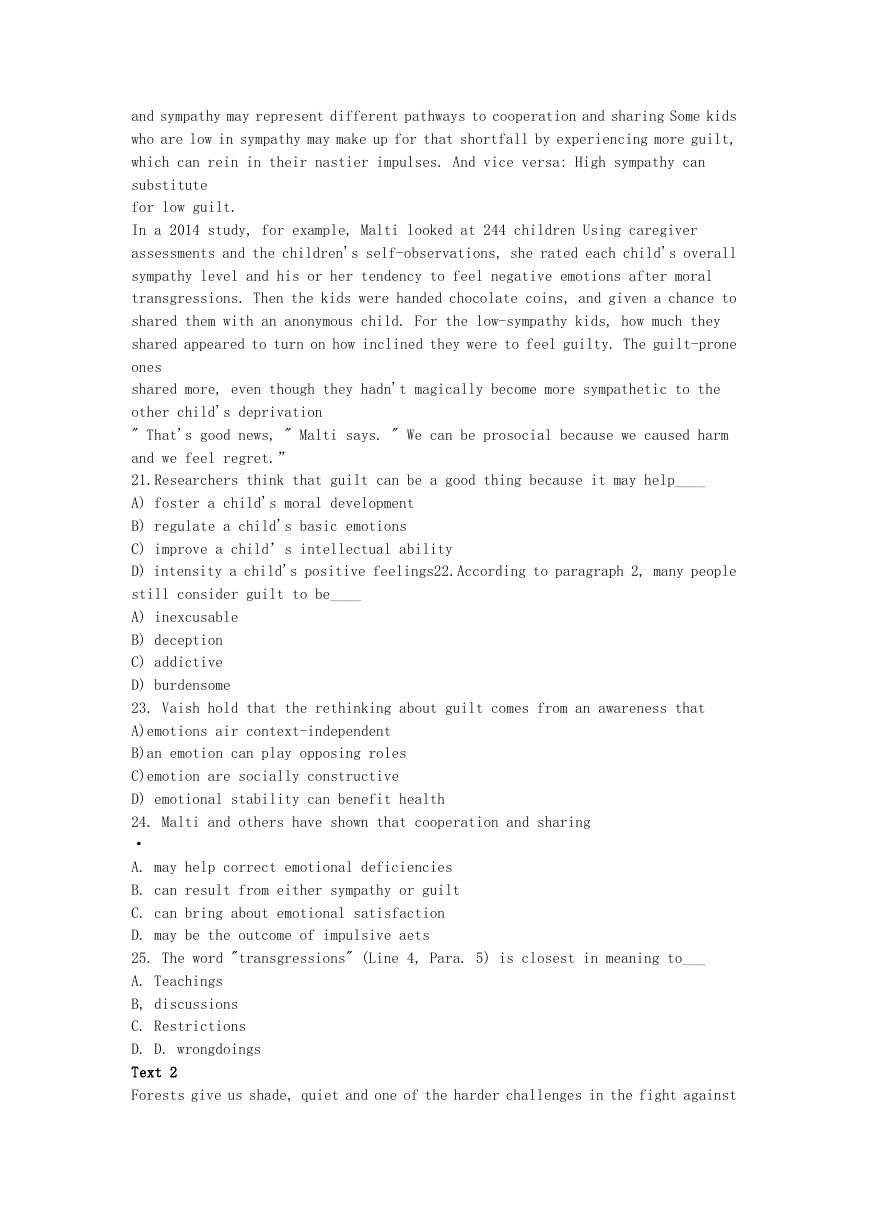
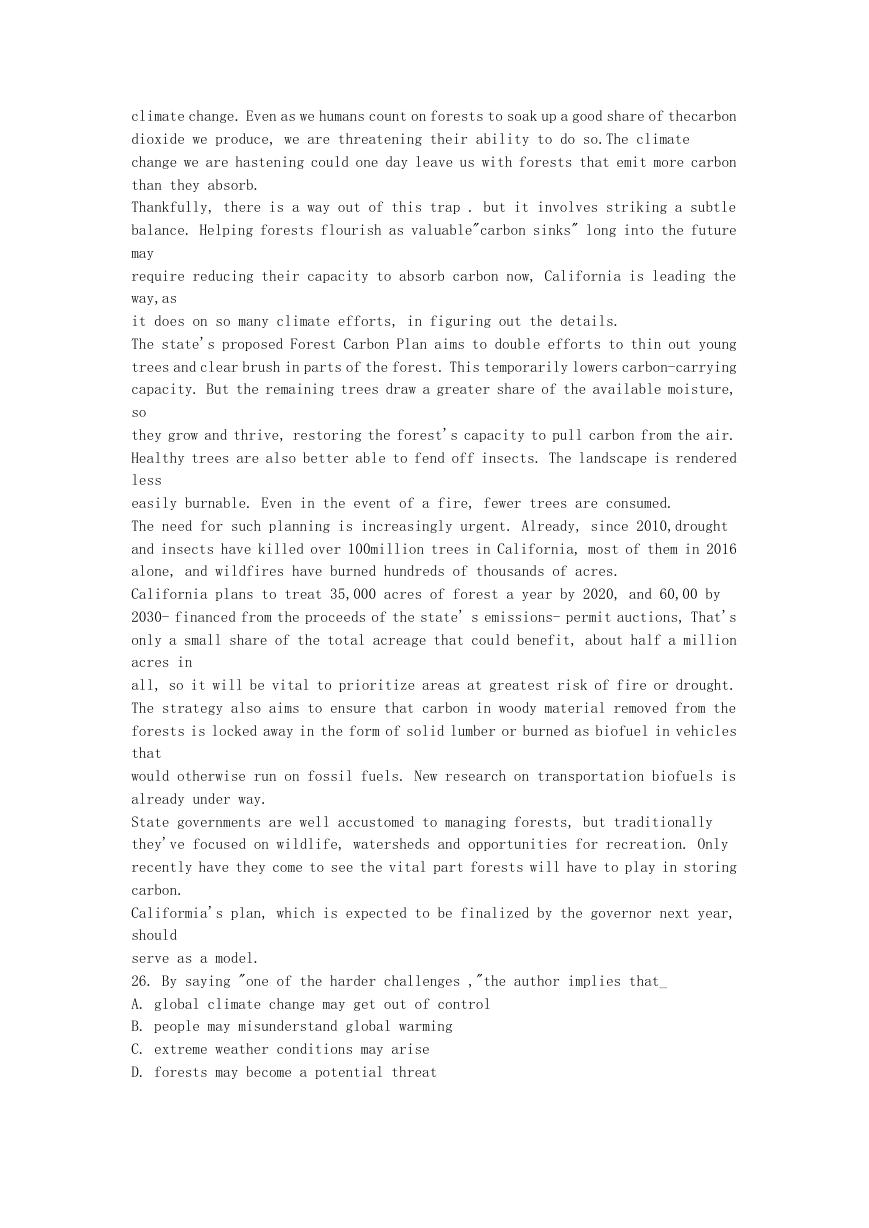
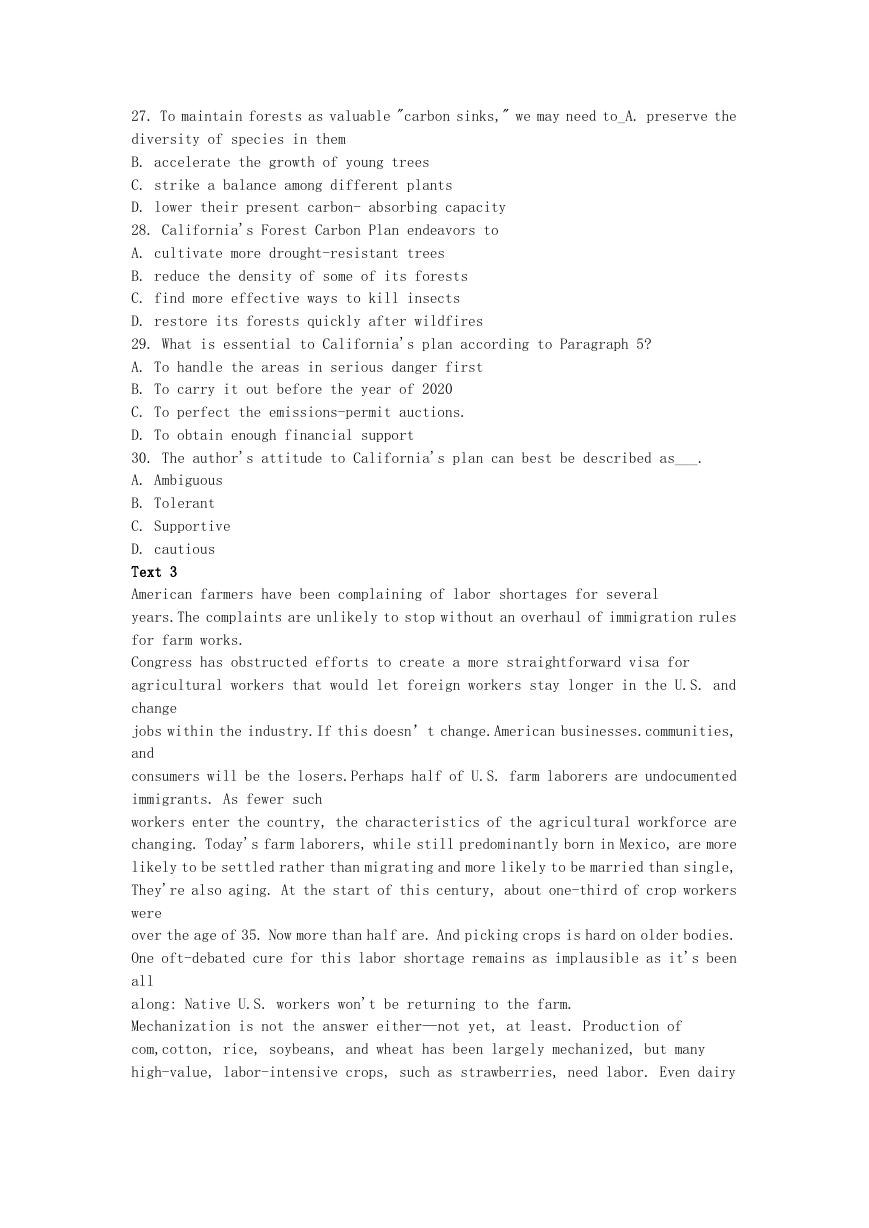
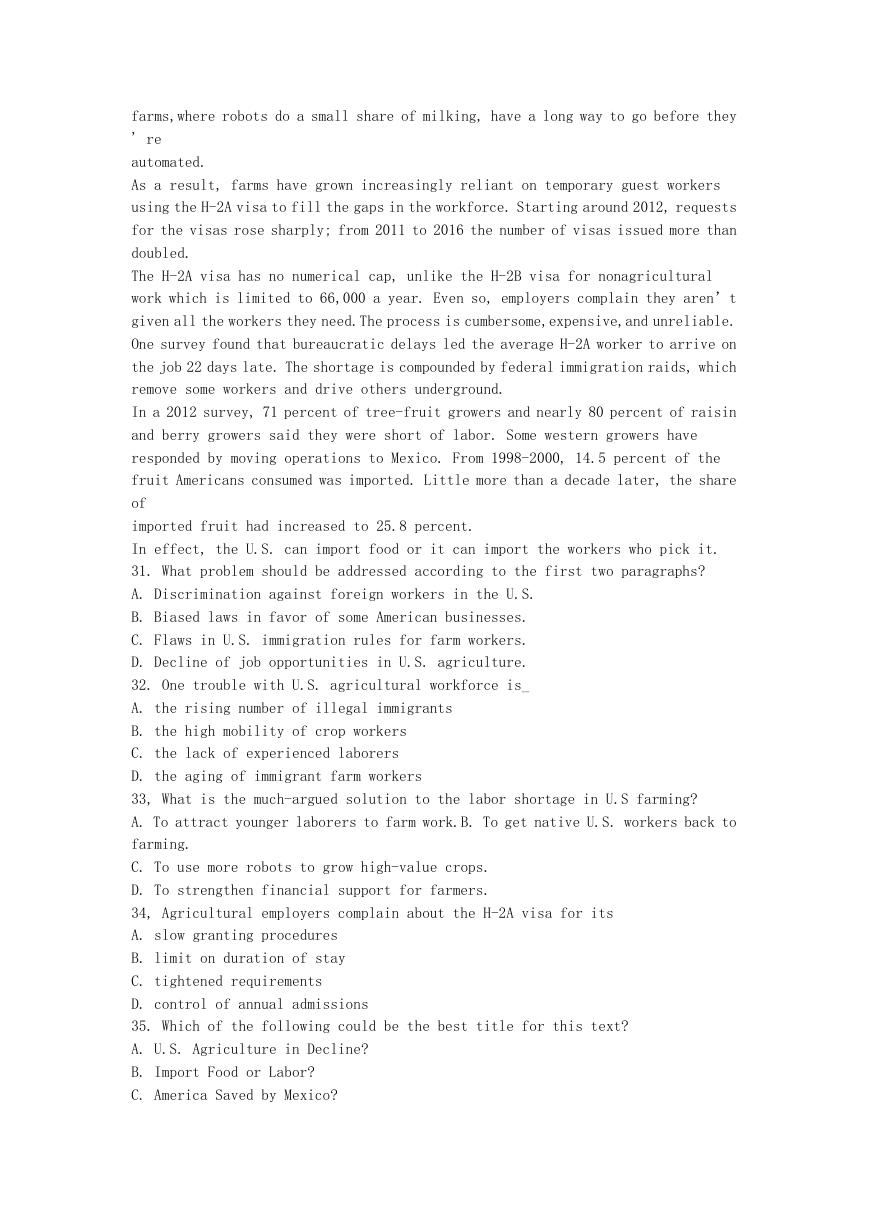
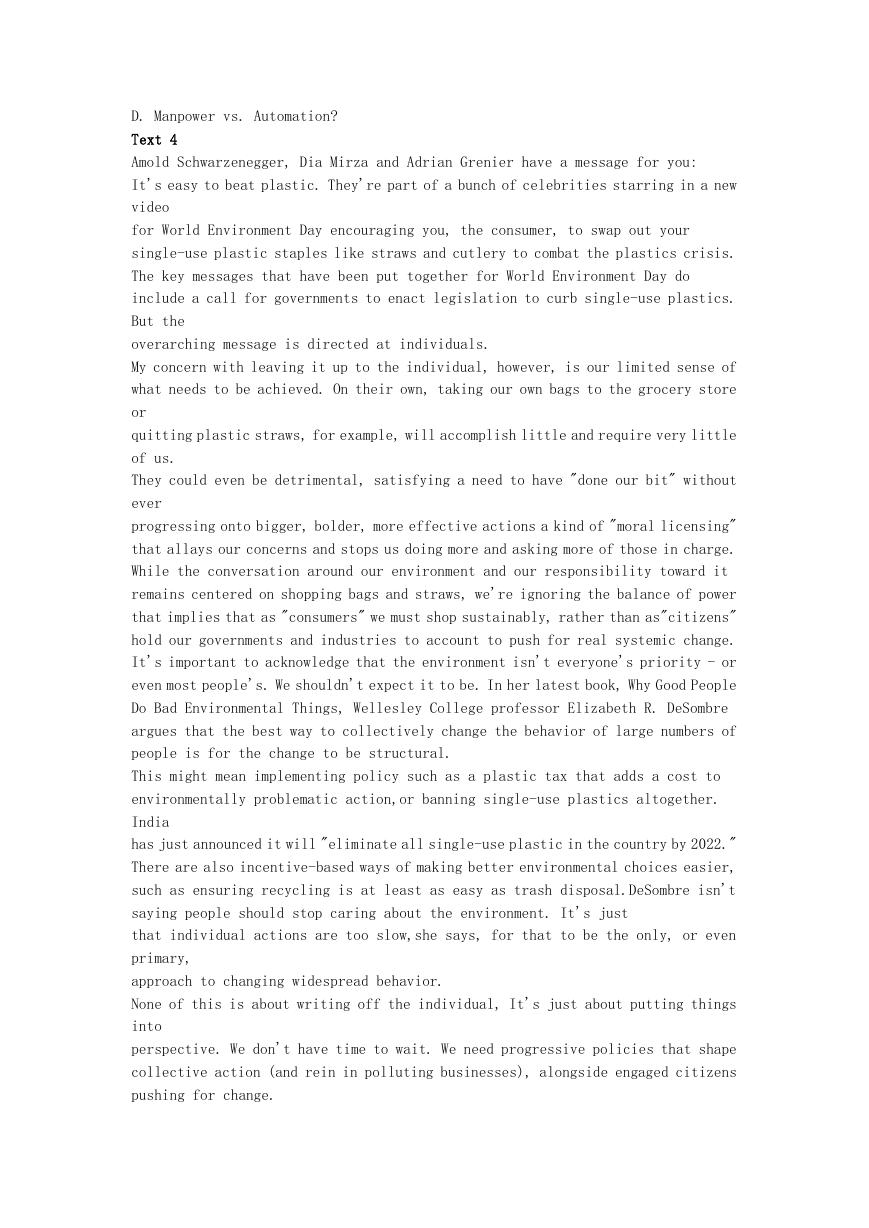
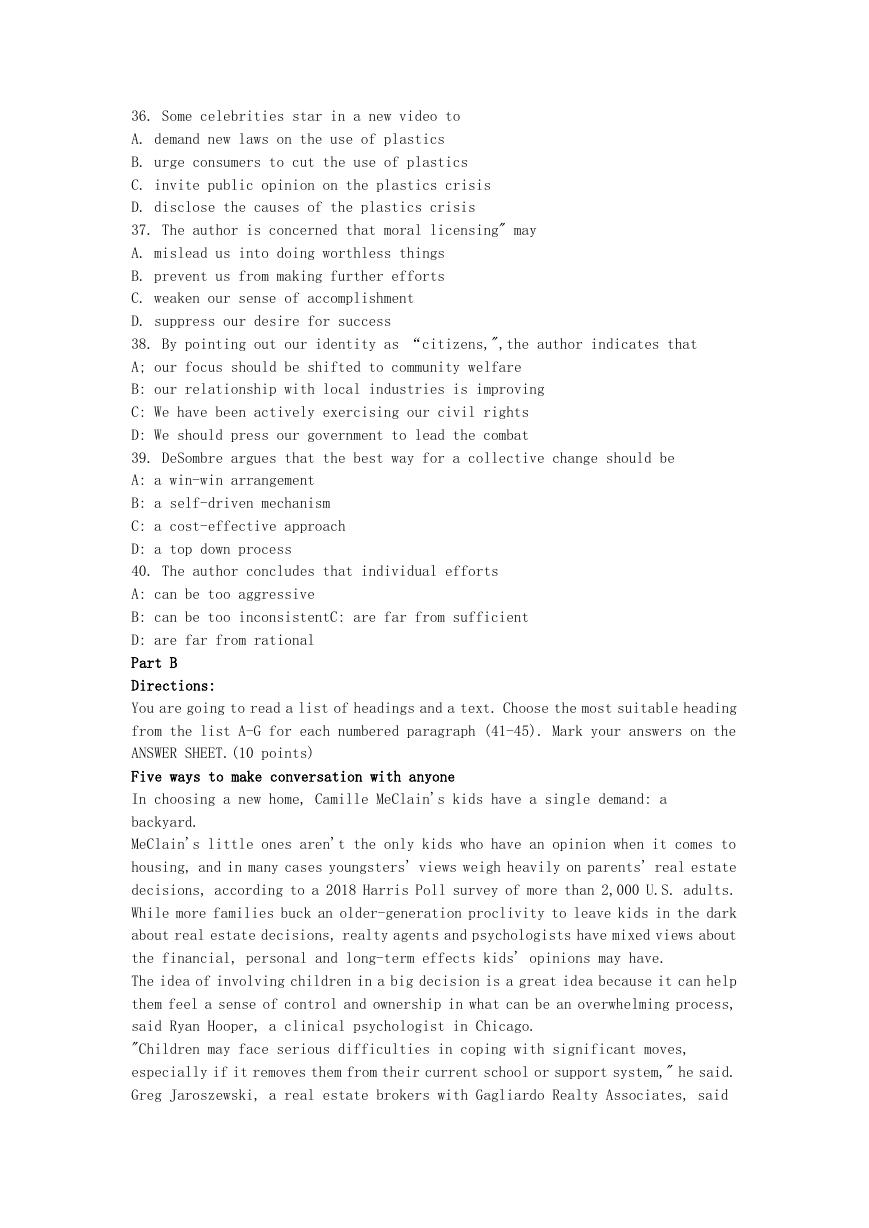








 2023年江西萍乡中考道德与法治真题及答案.doc
2023年江西萍乡中考道德与法治真题及答案.doc 2012年重庆南川中考生物真题及答案.doc
2012年重庆南川中考生物真题及答案.doc 2013年江西师范大学地理学综合及文艺理论基础考研真题.doc
2013年江西师范大学地理学综合及文艺理论基础考研真题.doc 2020年四川甘孜小升初语文真题及答案I卷.doc
2020年四川甘孜小升初语文真题及答案I卷.doc 2020年注册岩土工程师专业基础考试真题及答案.doc
2020年注册岩土工程师专业基础考试真题及答案.doc 2023-2024学年福建省厦门市九年级上学期数学月考试题及答案.doc
2023-2024学年福建省厦门市九年级上学期数学月考试题及答案.doc 2021-2022学年辽宁省沈阳市大东区九年级上学期语文期末试题及答案.doc
2021-2022学年辽宁省沈阳市大东区九年级上学期语文期末试题及答案.doc 2022-2023学年北京东城区初三第一学期物理期末试卷及答案.doc
2022-2023学年北京东城区初三第一学期物理期末试卷及答案.doc 2018上半年江西教师资格初中地理学科知识与教学能力真题及答案.doc
2018上半年江西教师资格初中地理学科知识与教学能力真题及答案.doc 2012年河北国家公务员申论考试真题及答案-省级.doc
2012年河北国家公务员申论考试真题及答案-省级.doc 2020-2021学年江苏省扬州市江都区邵樊片九年级上学期数学第一次质量检测试题及答案.doc
2020-2021学年江苏省扬州市江都区邵樊片九年级上学期数学第一次质量检测试题及答案.doc 2022下半年黑龙江教师资格证中学综合素质真题及答案.doc
2022下半年黑龙江教师资格证中学综合素质真题及答案.doc